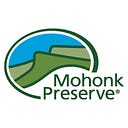Research Report #10 — Prevailing Winds in the Shawangunks
For many years scientists and naturalists have been studying and observing the flora and fauna of the Shawangunk Ridge. Foremost among them was Daniel Smiley, for whom Mohonk Preserve’s Daniel Smiley Research Center is named. Dan wrote numerous reports summarizing his observations on various topics. This regularly occurring series will feature some of these reports; some hold tremendous scientific value today and just await an interested researcher to follow up, others showcase a quirky sense of humor or highlight an oddity of nature.
Read the report: “Prevailing Winds in the Shawangunks.” April 1986. Daniel Smiley and Paul Huth
A Note From Director of Research Emeritus Paul Huth:
Questions about nature and natural history most often encouraged Daniel Smiley to go for answers to his extensive decades long records and reference collection. So it was when a number of subjects converged on learning what the seasonal prevailing wind directions were in the Shawangunks. What records were available?
The Mohonk Lake Cooperative Weather Station, established in January 1896, recorded the daily prevailing wind direction on the monthly weather reports sent to Weather Bureau through 1929. These wind directions were likely determined from the weathervane on top of the Mohonk Mountain House’s Central Building, built in 1888. This data waspublished in a 1934
State report. From 1973 to 1976 Dan, and one of his assistants, again recorded the daily prevailing wind direction from the same weathervane on Mohonk’s Central Building. For this report, we compared these observations for the six month ”Summer” Season (May-October) and “Winter Season” (November-April), 1896–1899, and 1973–1976. Also, we found that
seasonal wind speed and direction was recorded at the Sky Top Tower from 1931–1935 by the State’s Fire Observer as part of the Fire Weather Forecast Service.
Anemometer wind speed measurements and average wind speed measurements were found to be few and far between, but where available, we presented them.
We developed a series of seasonal “wind roses” comparing the prevailing wind directions for the period of 1896–1899 and 1973–1976 taken at the same Central Building weather vane. In the “Summer”, in both time periods, the average direction was southerly. In the “Winter”, for both time periods, the average direction was westerly. In contrast, the available “Summer” wind observations from the higher elevation at Sky Top averaged westerly, with a strong, part-time, easterly component.
These prevailing wind direction records were helpful in Mohonk Preserve staff and Research Associate research projects involving acid precipitation and cloud water studies, air quality measurements, potential impacts of aerially applied biocides, a proposed ridge-top wind farm, bird migration, and a proposed nuclear power plant to the east of the ridge near Highland. It can be noted, that the wind farm and nuclear power plant were not built!
Two noted atmospheric scientists, Dr. Austin W. Hogan and Dr. Vincent J. Schaefer, commented to Dan and me, that the location of the Mohonk Lake Cooperative Weather Station (NWS), some 1000 feet above the adjacent valley floors, was prime for sensing a broad sweep of ambient air in the continental/maritime air mass boundary area. And, that air quality sampling
at Sky Top Tower ranked as one of the most unique sampling sites in the northeast.
Read the report: “Prevailing Winds in the Shawangunks.” April 1986. Daniel Smiley and Paul Huth
